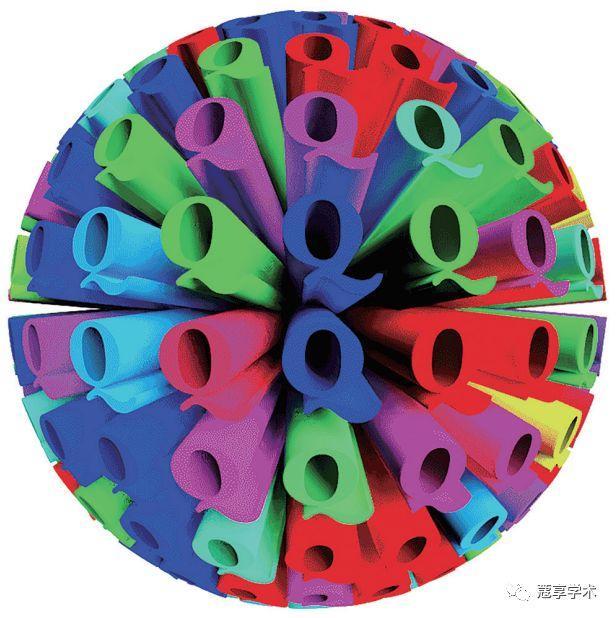尋夢新聞LINE@每日推播熱門推薦文章,趣聞不漏接❤️
量子計算機應該能更好地模擬量子系統。從理論上講,它們能夠計算各類材料的性質,包括可能的催化劑、藥物、太陽能電池和蓄電池。這樣的話,我們就不用再做那些費時費力的試探性實驗了。
作者 | Frank Wilczek (麻省理工學院教授、2004年諾貝爾獎得主)
翻譯 | 胡風、梁丁當
使用量子比特的計算機性能將遠超普通計算機,然而要做到它,我們還面臨重重困難。
New systems using ‘qubits’ instead of classical bits will be vastly more powerful–but they still face important obstacles.

近幾年,量子計算機領域有許多重要的進展。IBM、Google和微軟是這些進展的主要推動者,一些大學科研團隊和國家實驗室也有重要貢獻。量子計算技術前途無量,這一點已是業界的共識。然而對於未來量子計算機具體是什麼樣子的,又將有多大的影響力,卻還沒有個清晰的說法。事實上,越來越明顯的一個趨勢是,今後將會出現規模和形式多種多樣的量子計算機,以適應不同的用途。
In recent years there has been a lot of progress in the field of quantum computers. IBM, Google and Microsoft are big players, as are several university-based research groups and national laboratories around the world. There is a widespread sense that the technology has great promise, but the exact nature and scope of that promise has been only vaguely defined. Indeed, it’s becoming clear that quantum computers will come in a variety of different sizes and shapes, suited for different purposes.
傳統的計算機以比特作為信息的存儲單元。一個比特有兩個狀態:1或者0(比特的英文Bit是二進制數字,即binary digit的簡寫)。各類複雜的信息–從棋子的位置、蛋白質的結構到貓的圖片,都可以轉換成一長串比特。而量子計算機則是使用量子比特(英文簡稱為qubit)。量子比特可以是1,也可以是0,還可以是介於1和0之間某種狀態。這種狀態叫做疊加態,是1和0兩種狀態不可分解的混合。在不同的探索性量子技術中,量子比特的載體可能是單個的原子、電子、微小的超導環,或是更奇特的「任意子」(這是我提出並命名的一種準粒子)。量子比特比經典比特更加複雜,能夠存儲的信息密度也更高。
Ordinary computers store information in the form of bits, which can be in one of two states, 1 or 0. (「Bit」 is short for binary digit.) Long sequences of bits can encode complex information of many kinds, from chess positions to protein structures to pictures of cats. Quantum computers, on the other hand, use quantum bits, called qubits. Qubits can be 1, 0 or something in between–so-called superpositions, which are indissoluble mixtures of 1 and 0. In different exploratory technologies, qubits can take the form of individual atoms, electrons, minuscule superconducting loops or more exotic 「anyons」 (a breed of emergent particle that I studied and named). Qubits, being more intricate than bits, can store information more densely.
經典計算機並不適用於模擬量子系統。原因很簡單:它們沒有足夠的空間來存儲和操作量子系統所含的信息。量子計算機應該能更好地模擬量子系統。從理論上講,它們能夠計算各類材料的性質,包括可能的催化劑、藥物、太陽能電池和蓄電池。這樣的話,我們就不用再做那些費時費力的試探性實驗了。
Classical computers aren’t well adapted to simulating quantum systems. They simply don’t have enough room to store and manipulate the required information. Quantum computers promise to be much better at quantum mechanics. In principle, that will enable them to calculate the properties of matter, including potential catalysts, drugs, solar cells and batteries, eliminating the need for laborious, hit-or-miss experiments.
也有人宣稱,量子計算機還能充當破解密碼的工具。但是這類應用的要求非常苛刻,需要利用數千個量子比特進行精確計算。這個目標距離我們還非常遙遠,在可見的未來,通用量子計算機大致將局限在幾十個量子比特以內,並且出錯率很高。
Quantum computers are also touted as tools for cracking codes. But those applications are very demanding, requiring precise calculations involving thousands of qubits. That prospect is futuristic. For the foreseeable future, general purpose quantum computers will be restricted to a few tens of qubits, and they will be error-prone.
量子比特盡管性能強大,卻很脆弱,且難以操控。在外界環境或其他粒子的干擾下,量子比特存儲的信息很容易被打亂。比如,我們都知道傳統計算機存儲器中的信息可以被強磁場消除,而量子存儲器對比那小得多的磁場都非常敏感。
they’re also delicate and hard to work with. If qubits are jostled by environmental fields or particles, it can scramble the information they were meant to encode. We’re familiar with the fact that a computer memory can get erased by a large magnetic field, for example, but quantum memory is sensitive to much smaller fields.
相比之下,雖然量子模擬器不那麼靈活、不允許任意編程,但對於研究量子力學來說,卻是更容易做到的替代方案。這種方法的基本策略是這樣:如果一個特定量子系統的行為很有趣但是很難通過實驗來研究,我們就利用另一個比較容易操控的量子系統來模擬它。超冷原子系統就是一種特別有用的量子模擬器,因為我們可以通過調節雷射、電場和磁場來囚禁和操控原子,進而調控原子之間的相互作用。例如,我們可以用冷原子來模擬中子的行為,從而了解中子星的內部物質狀態。
Quantum simulators are a less flexible but much easier alternative for studying quantum mechanics. The idea is to mimic the behavior of a particular quantum system that is interesting but difficult to study by using another quantum system that is more user-friendly. Assemblies of ultracold atoms are especially useful quantum simulators, because we can manipulate their interactions by bathing them in adjustable laser light, together with electric and magnetic fields. For example, we can use cold atoms as stand-ins for neutrons, to learn about neutron-star interiors.
經典-量子混合計算是另一個有前途的發展方向——經典計算機可以調用一個相對較小的量子「協處理器」來做一些關鍵的計算。這種協處理器的作用類似於圖形處理單元(GPU,一種能非常高效地執行一些專門運算的超高速晶片)。GPU最初是為電腦遊戲而設計開發的,它們使電腦可以快速地刷新圖形顯示。但是,聰明的研究人員發現,它們還可以用在別的很多地方,特別是模擬誇克和膠子是如何形成質子的。
Another promising development is classical-quantum hybrids, in which a classical computer can call on a relatively small quantum 「coprocessor」 to do critical calculations within its own programs. The coprocessor strategy follows the spirit of Graphical Processing Units (GPUs)-superfast chips that do some specialized operations extremely efficiently. GPUs were originally developed for use in computer games, where they make it possible to update fast-paced displays. But ingenious researchers have exploited them in many other ways—notably, to simulate how quarks and gluons build up protons.
在大型的通用量子計算機問世——如果真有那麼一天——之前,這種經典-量子混合策略有可能使專門用於化學和材料科學的量子計算變成現實。讓量子處理單元(QPU)盡快到來吧!
The hybrid strategy could start to deliver on the promise of quantum computation for chemistry and materials science long before large, general-purpose quantum computers are available—if they ever are. Bring on the QPUs!

Frank Wilczek
弗蘭克·維爾切克是麻省理工學院物理學教授、量子色動力學的奠基人之一。因在誇克粒子理論(強作用)方面所取得的成就,他在2004年獲得了諾貝爾物理學獎。
英文原文於2019年3月14日發表於華爾街日報。中文翻譯版經授權轉載自「蔻享科普」。
《返樸》,致力好科普。國際著名物理學家文小剛與生物學家顏寧聯袂擔任總編,與幾十位學者組成的編委會一起,與你共同求索。關注《返樸》(微信號:fanpu2019)參與更多討論。二次轉載或合作請聯繫[email protected]。
